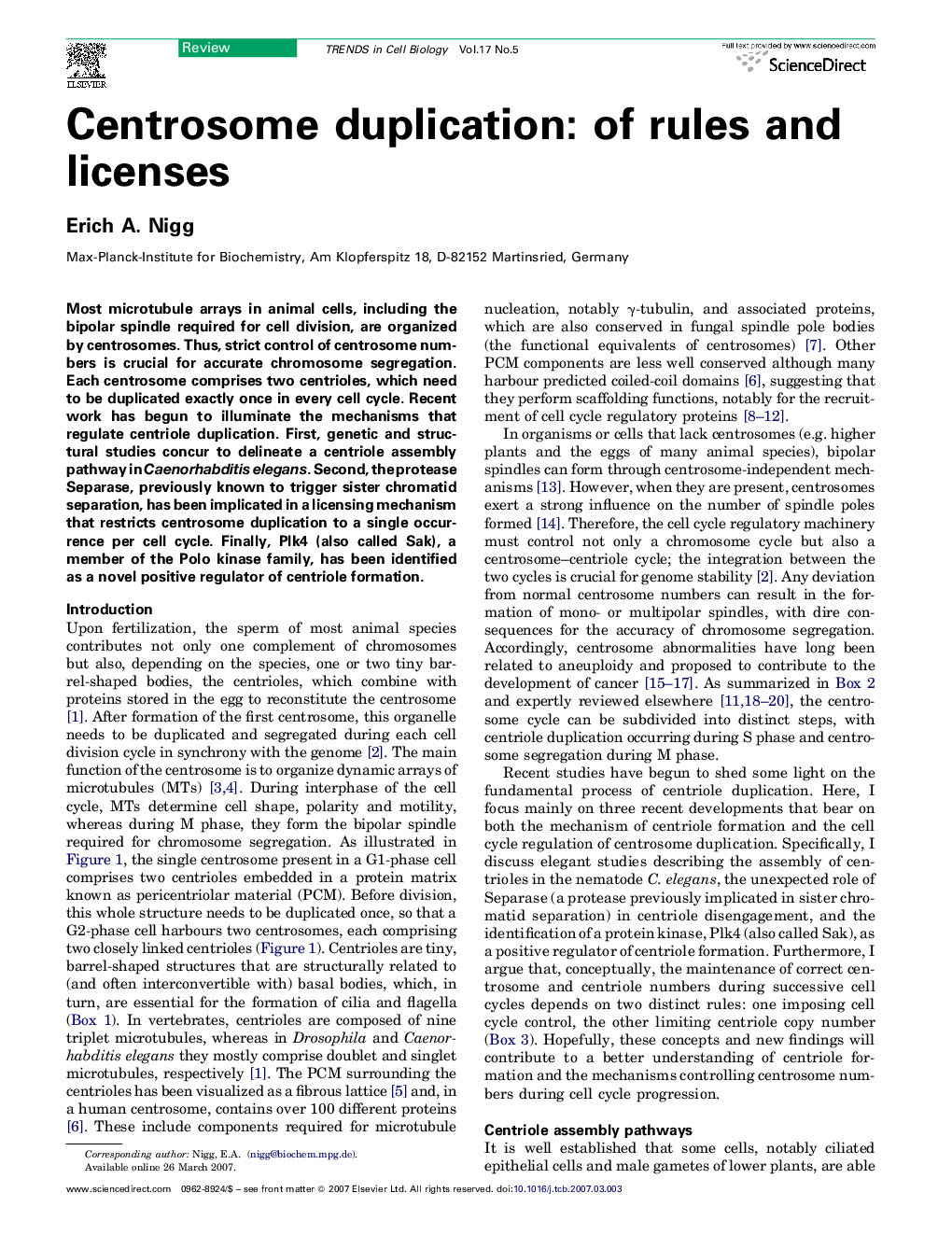| Article ID | Journal | Published Year | Pages | File Type |
|---|---|---|---|---|
| 2205233 | Trends in Cell Biology | 2007 | 7 Pages |
Most microtubule arrays in animal cells, including the bipolar spindle required for cell division, are organized by centrosomes. Thus, strict control of centrosome numbers is crucial for accurate chromosome segregation. Each centrosome comprises two centrioles, which need to be duplicated exactly once in every cell cycle. Recent work has begun to illuminate the mechanisms that regulate centriole duplication. First, genetic and structural studies concur to delineate a centriole assembly pathway in Caenorhabditis elegans. Second, the protease Separase, previously known to trigger sister chromatid separation, has been implicated in a licensing mechanism that restricts centrosome duplication to a single occurrence per cell cycle. Finally, Plk4 (also called Sak), a member of the Polo kinase family, has been identified as a novel positive regulator of centriole formation.
